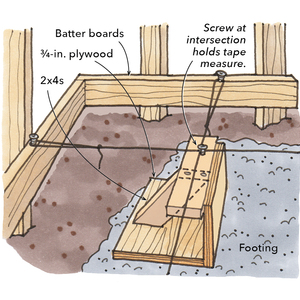Looking for a tool to remove the paint from my 100 year+ siding any suggestions?
Discussion Forum
Discussion Forum
Up Next
Video Shorts
Featured Story

A rear addition provides a small-scale example of how to frame efficiently.
Featured Video
Video: Build a Fireplace, Brick by BrickHighlights
"I have learned so much thanks to the searchable articles on the FHB website. I can confidently say that I expect to be a life-long subscriber." - M.K.
Fine Homebuilding Magazine
- Home Group
- Antique Trader
- Arts & Crafts Homes
- Bank Note Reporter
- Cabin Life
- Cuisine at Home
- Fine Gardening
- Fine Woodworking
- Green Building Advisor
- Garden Gate
- Horticulture
- Keep Craft Alive
- Log Home Living
- Military Trader/Vehicles
- Numismatic News
- Numismaster
- Old Cars Weekly
- Old House Journal
- Period Homes
- Popular Woodworking
- Script
- ShopNotes
- Sports Collectors Digest
- Threads
- Timber Home Living
- Traditional Building
- Woodsmith
- World Coin News
- Writer's Digest


















Replies
Hiya Dave, Welcome to Breaktime.
Exterior paint removal from 100+ year old siding?
Almost a guarantee your be finding lead base paint and in some areas of the country that can be a nasty EPA scenario.
You haven't put anything in your profile as to your location so answers will be limited.
If you're rural, laborious hand scraping is usually the best but there are motorized tools that look similar to a router with an adjustable depth control that supposedly can be fine tuned to clean various paint layers off.
A good bet is to hire some teens to get the bulk off and then go over it yourself to clean it up.
You might want to add what you plan to do with the siding after it's cleaned as in paint, stain, oiled etc.
I"m well aware of the lead paint issue. The area I live is quite rural and I plan to repaint with a quality acrylic latex paint. The porter cable tool mentioned has no dust collection so its not an option. was thinking about the paint shaver or perhaps the silent paint removal system . Its some type of infrared system.
I was wondering about the shape of your clapboards.
By shape meaning how weathered and flat they might be after so many years.
Pine, cedar or redwood? How thin and how much revealed is the clapboard at its base? Much cupping? It seems that might carry ramifications as to how well a motorized tool might work.
Cedar and redwood might provide different options.
The clapboards are cedar and are mostly in very good shape, there is some cupping on the first course. The exposer is 4.5 inches
A good heat gun, sharp scrapers and a new 8'' mill file..best time you'll ever have with your clothes on..crank up the tunes and scrape away..it's easier than it sounds.
Go Stab yourself Ya Putz! Ya think I Parked here?
I have heat gunned and scraped my fair share of siding and trimwork, it does do a nice job however it can be a little tedious at times. Was hoping there might be an easier and more ecologically friendly way.
The mountain seems so big when you stand there looking at it. Heh heh
If I were tempted to try the portercable paint removal tool I'd try to rent one first to see how and if it worked in your scenario before buying one.
Cedar and redwood claps can look pretty good in a rustic sense if left natural.
Your exposure probably keeps your clapboards on the thin side. I had one old coat of leaded paint on thin redwood siding that I removed completely with a sandpaper disc on a grinder. Once I got the technique down it went pretty fast.
Coated with a transparent oil one year and then again the next and its still holding well with a gloss look 5 years later. Easy application too.
Just to share a thought.
Thanks for your input.
My house has ceder siding that I'm redoing using the Porter Cable Paint remover. I've found that the disk loads up pretty quick. I use a propane torch with a good putty knife to get the thick paint off, use a good carbide scraper (throw away the bent metal ones), then I use the Porter Cable to expose the wood. It's work but it's home. If it was easy, everyone would be doing it.
Try using oven cleaner to get the gunk off of the discs. You will get a lot more mileage out of them.
"Was hoping there might be an easier and more ecologically friendly way."
There really is no 'ecological' issue using heat guns. The temp is too low to vaporize the lead. Wide heat plates work better for large flat areas like clapboards. Consider chemicals in your cost/benefit analysis. No dust this way.
csnow, I am not an expert, maybe others here can tell if I'm right or wrong, but I believe there is an enviornmental issue in that scraping with a heat gun does create enough lead dust to contaminate the area under the work. Alot of care should be taken to protect the surrounding area. When it gets in the dirt around the house it stays there and some dirt eating kid 20 years later can get poisoned.
Edited 2/8/2004 11:52:06 AM ET by rich
"I believe there is an enviornmental issue in that scraping with a heat gun does create enough lead dust to contaminate the area under the work."
True enough, though any removal method has the same soil issue. Nothing special about a heat gun here that I am aware of. The problem with soil is not so much kids eating it directly, but the dust getting blown around by a lawnmower and such. Also, planting fruits or vegetables in contaminated soil can contaminate the food.
The chips should be cleaned up. There is actually a chemical removal method that renders the lead inert, but that is not mainstream.
Ive used the porter cable paint remover grinder or whatever its called. It is heavy, dusty, and expensive to buy, but it works very well. The cabide discs last a long time too. It takes a while to learn to use it without gouging the wood. If i were going to buy a tool for what you describe i would look into the paint shaver system. I have heard a lot of positives about it and it has good dust control, but i have never used it personally.
I've actually heard and seen good results with the "Silent Paint Remover". (Google it, don't have the site). Little pricey, but I'm thinking about investing in one. Claims that there's little to no lead out-gassing.
Brian
_____________________________
HomeBase
________ Kitchen & Bath Builders, LLC
Brian Roberts, Manager
Anyone ever use the paint shaver? They run ads in every publication I can think of. It's a fancy 4 inch angle grinder with carbide blades and dust collection that costs a small fortune around 600 dollars.